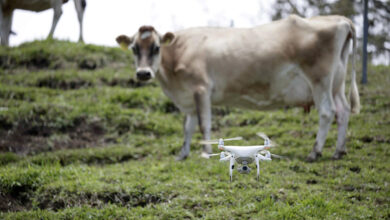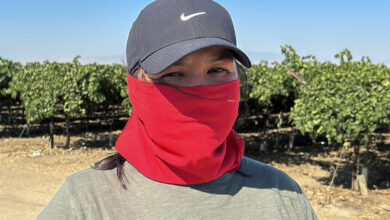Food that Could Disappear Due to Climate Change
Climate change will Leave a Series of Consequences on Human Life. One of Them is the Threat to People's Health and the Long-term Scarcity of Some Foods.

Photo: Pixabay
LatinAmerican Post | Brandon Martínez Salazar
Listen to this article
Leer en español: Alimentos que podrían desaparecer por el cambio climático
For the scientific community, climate change is already a reality that is affecting a large part of the world's population. However, what has been seen so far is just the tip of the iceberg of what human beings and all ecosystems will have to live with in the years to come.
This situation is increasingly worrying, not only due to the fact that natural catastrophes will appear that will negatively impact cities and communities, but there will also be a food security problem that would worsen the living conditions of the poorest people. Coupled with global population growth, hunger and malnutrition are likely to increase. Here it is important to highlight that socioeconomic factors have strongly influenced global warming, a consequence that had been warned decades ago by experts.
Thus, it is undeniable that climate change has, and will continue to have, a major impact on lifestyles and customs, including gastronomy. We tell you about some foods that would be threatened by climate change.
Foods that could disappear due to climate change
In the report "Climate Change: 2021: The Physical Science Basis", experts have detailed how humanity will be in trouble by 2050. One of the key points is that due to the great heat waves, which already felt in Europe and the United States, a large decrease in fresh water and a rise in sea levels are expected.
These living conditions will gradually cause some foods that we consume in our daily lives to become scarce to the point of disappearing from the market. In the same way, the social gap would widen even more, generating greater inequalities at the political, economic and social levels. Among the foods that will disappear are:
The chocolate:
This product originates from cocoa, a complicated food to cultivate, since it only lives in territories where the temperature reaches 20 degrees Celsius. Currently, half of the world's cocoa production is in the Ivory Coast and Ghana, two countries that are already feeling the impact of global warming.
The coffee:
The plant of the coffee essentially needs the pollination of bees and bumblebees for its production. However, these two insects fail to adapt to the extreme climates that the earth faces. Therefore, it is likely that a third of its population will disappear before 2030, affecting crops. In the same way, there are indications that before 2100 the land where coffee is grown will be infertile.
We suggest you read: Scientists discover microplastics in the blood, meat and milk of farm animals
The bananas:
As with cocoa, this fruit requires a moderate climate in order to be harvested. Environmental conditions will cause it to disappear in at least ten countries before 2050.
Olive oil:
This will be affected by pests and the aridity of the soil due to droughts. So, the production of olive trees (from which the oil is extracted) will be threatened.
The avocado:
This much-desired fruit has an uncertain future. It will most likely stop being consumed because its production requires huge amounts of water. Just one tree needs 230 liters. For the next decades, the water reserves will not be enough for its overproduction.
Red meats:
According to the FAO, the livestock industry is responsible for 15% of gas emissions in the atmosphere. In addition, it must be added that this industrial model promotes deforestation, excessive use of water sources and the emission of methane gases from the animals themselves. Therefore, within the proposals of the international organization, a large reduction in the livestock sector is recommended. It is presumed that over time there would be a transition to plant-based meat products.
Rice:
It is another of the products that has recently been threatened by extreme weather events. In Italy, with the environmental crisis, it is estimated that farmers will lose 30% of their crops this year. Likewise, due to the decrease in the capacity of the land, it is possible that it will disappear from daily life, at least in several of its varieties.
Threats to human health and FAO recommendations in the face of climate change
According to the FAO (Food and Agriculture Organization of the United Nations), one of the great challenges that humanity will have in the face of climate change will be facing the appearance of new pests and diseases that arise from certain temperatures and wet conditions.
Likewise, it is estimated that this situation will affect 200 million families around the planet that depend on fishing and aquaculture, since high temperatures will bring severe droughts and warming of water resources.
On the other hand, the FAO document on "Climate Change and Food Security" warns that, although agriculture is part of the problem, it can also help reduce greenhouse gas emissions with good management of ecosystems and effective use of the land, which allows controlling the way in which it is exploited. In this way, natural resources can be conserved and food production guaranteed in the world.
Likewise, it makes a specific emphasis on the sustainable management of livestock and that all nations must prepare for the adaptation of a future that will be subject to changing climate conditions. Finally, in the face of this problem, all that remains is for governments to begin implementing adaptation and sustainability policies so that the world can lead a less catastrophic life.




